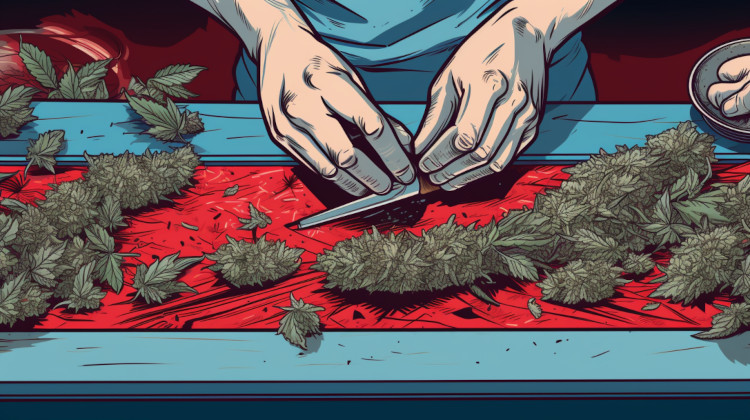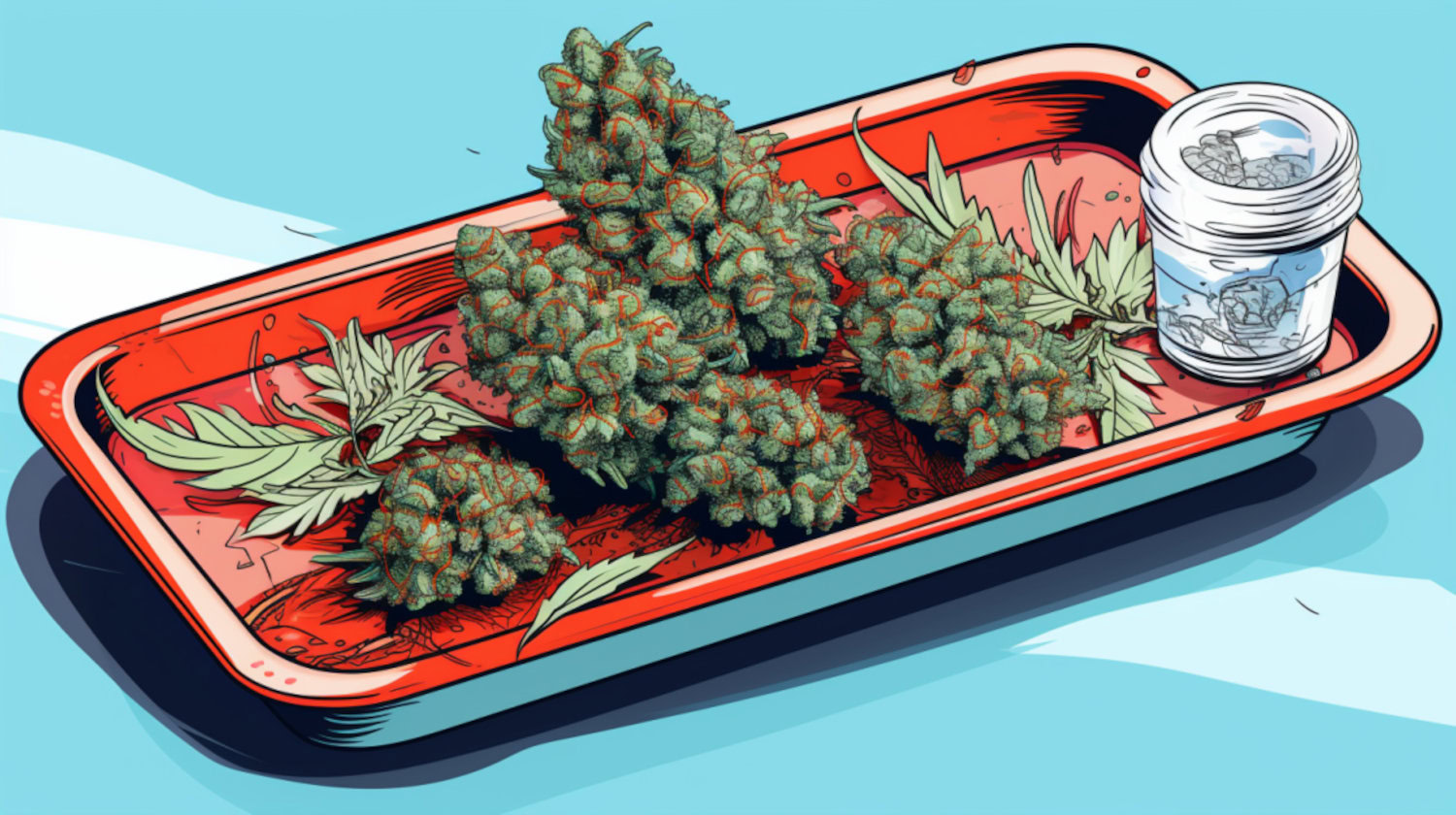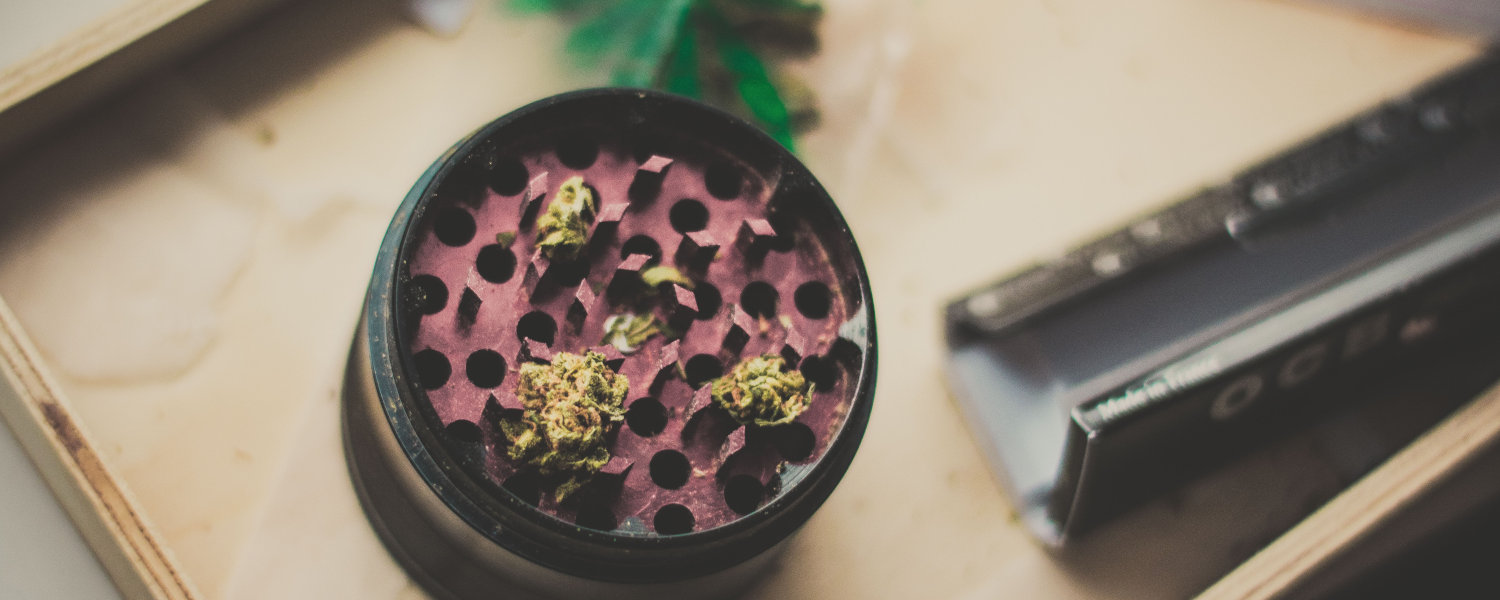The world of cannabis is constantly expanding. Keeping up with new terms, techniques, and practices can be complicated for anyone with a busy life. Catching up on all things cannabis becomes that much more difficult for newcomers and casual consumers who want to learn more.
Besides growing and producing your own products, rolling a joint may be one of the best early ways someone can physically get hands-on with the plant and learn about it simultaneously. The joint is a classic consumption option that has existed in various forms for years. Often made using a rolling paper and possibly a cardboard filter tip, joints are one of the quickest ways to roll up your flower and smoke it on the go or at home. While many twist up huge joints these days, sometimes called bats or doinks, some prefer the option of a smaller-sized joint.
These tinier joints have been called pinners for decades, reflecting their more diminutive stature. While the pinner joint is more likely suited for one-person or small-group settings, knowing how to roll one is vital to ensure that you and possibly your friends can always smoke cannabis when you want to.
What is a Pinner Joint?
Pinners get their name for their shape and size, which have been compared to a sewing pin. Oral history suggests that pinners were created to extend a person's short stash supply.
While most cannabis consumers look down on the size of the pinner, don't let that bother you. In reality, as long as you're okay with the size of the joint, then smoke on and enjoy. It's all about enjoying the flower inside of the joint anyway.
Still, the pinner is a subsection of one of the more popular ways to smoke weed: a joint. Popular hand-rolled cannabis smoking options include:
- Joints: Containing only cannabis, a joint is hand rolled using various rolling paper materials and a possible cardboard filter tip for smoking ease. However, most pinners are made using standard 1 ¼ rolling paper or smaller. Additional items can be added to the equation, like hash or tobacco, but these additions often deviate from the flower-only nature of the classic joint.
- Spliffs: Adding tobacco to a joint makes a spliff, no matter the rolling paper used. This trend began in Europe and Western Asia, where hash and tobacco were often mixed when smoking. This is also an excellent option for anyone seeking a tobacco buzz with their cannabis.
- Blunts: Typically made using flower and a gutted cigar, blunts also contain tobacco. Unlike a spliff, the tobacco is found in the wrapper. However, you may not get the added tobacco if your wrap is made from various materials, including rose petals, hemp, gold, and many other unique blunt wraps.
Advantages and Disadvantages of Pinner Joints

Pinners come with their fair share of pros and cons. Depending on the smoker you are and the experience you're seeking, you may have no issue with a thin joint, or you could have one or more of the following gripes:
Pros:
- Economical: Whether you're pinching pennies, have a low tolerance, or need to extend your stash, pinner joints help you experience the benefits of cannabis without using your entire supply.
- Good for Beginners: Whether worrying about getting too intoxicated or you want to practice rolling a small but effective joint, pinners can help keep the dosage lower while making joint rolling as easy as possible.
- Grab and Go: Any joint is easy enough to stash in a doob tube, pocket, or other storage option when on the go. With their smaller size, pinners amplify the discretion and portability.
Cons:
- Rarely a Crowd Pleaser: Pinners are small, and they contain less cannabis than joints rolled into a cone. So, if you're sharing your joint, a pinner is probably not the best option, since it'll be used up much more quickly.
- Fast Burning: Small joints tend to burn quicker due to their lack of cannabis and overall size.
- Possible Ridicule: Some people are particular about their cannabis and what they smoke. While it's not super common, some people might criticize a pinner in social situations.
Common Uses of a Pinner Joint
Newcomers and experienced consumers alike can benefit from a pinner. At the same time, it may not be a bat of a joint like many like, but skinny joints still have the same cannabis you'd find in a heavy hitter.
Newbies may enjoy a pinner because it isn't as massive as a classic joint, blunt, or spliff. While this may seem funny to experienced smokers, those larger joints may intimidate or overwhelm a new smoker.
Veteran consumers may scoff at a pinner, but these narrower joints are effective when a personal joint does the job. A pinner may fill the void, especially if you were considering a shorter joint anyway.
A pinner may be ideal for anyone looking to conserve their stash or keep their consumption in check. With a bit of cannabis, but far from the usual amount used, consumers can still feel the effects without becoming overly intoxicated.
How to Roll a Pinner Joint

Rolling a pinner joint follows the typical joint rolling process, only downsized a bit. First, get your supplies ready. To roll a joint, you'll need:
- Flower
- Grinder (Optional)
- Rolling paper
- Rolling tray (Optional)
- Filter tips/ crutch (Optional)
- Chopstick, pen, or similarly shaped item
- Torch or lighter
With everything in place, you can start to roll your skinny joint:
- Grind Your Cannabis: You want to create an evenly shredded flower that's easy to pack but won't slip out the joint once packed. There are plenty of ways to grind cannabis, but a quality grinder is the best option.
- Make Your Filter Tip: If you want, roll a thin piece of cardboard into a W shape to be inserted into the mouthpiece end of your joint. You can typically find this cardboard in your rolling papers, but that isn't always the case.
- Pack Your Cannabis: Place your ground cannabis onto the paper, evenly distributed through most of the paper. While packing, use a chopstick or similarly shaped tool to push or pack the flower. This will condense the cannabis and make it last longer and burn more evenly.
- Roll Your Joint: Hold the filter in place, then roll the unglued end of the paper around the bud. Once rolled, seal the joint by licking the glued edge of the paper and pressing gently but firmly.
- Smoke When Ready!
Pinner Joints vs. Cone Joints
Pinners are made using loose rolling paper. A cone does much of that work for you, leaving you to pack, twist, and smoke your cannabis.
Cones are the midpoint between pre-rolls and handmade joints. In most cases, cones come pre-rolled and sealed at the mouthpiece. These cones are often packed into boxes of 5, 10, or more similar cones. When ready to make a joint, the consumer can take out a cone and begin packing their bud without any of the earlier prep work, except for grinding the flower. Cones come in many sizes, allowing people to roll everything from pinner joints to bats exceeding five inches in length.
Like the pinner, cones can sometimes catch flack from plant enthusiasts. However, there's a time and place for cones. For anyone who isn't that great at making their joints, a cone helps resolve the issue while allowing you to learn some steps to rolling your own joint. Cones also have a place for anyone who wants to smoke but doesn't have the few minutes to craft a perfect hand-rolled joint. Ultimately, the choice is yours, even if some weed smokers may have their opinions.
How Much Weed is in a Pinner Joint?
How much weed you'll smoke depends on the size of your joint. The standard-sized option often contains 0.5 to 1.5 grams, with the joint size and rolling paper used playing key determining factors. Pinners contain much less weed, usually topping out at around 0.5 grams. With less cannabis to smoke, you can expect to feel less of an impact than you may from a joint or other hand-rolled smoked options.
The information in this article and any included images or charts are for educational purposes only. This information is neither a substitute for, nor does it replace, professional legal advice or medical advice, diagnosis, or treatment. If you have any concerns or questions about laws, regulations, or your health, you should always consult with an attorney, physician or other licensed professional.




